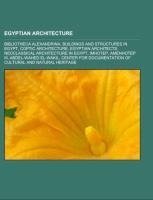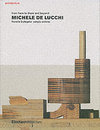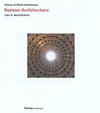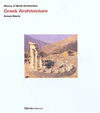
-
 Anglický jazyk
Anglický jazyk
Egyptian architecture
Autor: Source: Wikipedia
Source: Wikipedia. Pages: 43. Chapters: Bibliotheca Alexandrina, Buildings and structures in Egypt, Coptic architecture, Egyptian architects, Neoclassical architecture in Egypt, Imhotep, Amenhotep III, Abdel-Wahed El-Wakil, Center for Documentation of Cultural... Viac o knihe
Na objednávku, dodanie 2-4 týždne
15.30 €
bežná cena: 17.00 €
O knihe
Source: Wikipedia. Pages: 43. Chapters: Bibliotheca Alexandrina, Buildings and structures in Egypt, Coptic architecture, Egyptian architects, Neoclassical architecture in Egypt, Imhotep, Amenhotep III, Abdel-Wahed El-Wakil, Center for Documentation of Cultural and Natural Heritage, List of palaces in Egypt, Egyptian Museum, Senenmut, Sharm el-Sheikh International Airport, Hassan Fathy, Egyptian Media Production City, Heliopolis Palace, Planetarium Science Center, The Hanging Church, Church of the Virigin Mary, Saint Barbara Church in Coptic Cairo, Ramses Wissa Wassef, Egypt-Gaza barrier, Saint Mark's Coptic Orthodox Cathedral, Cairo, Heliopolis style, Church of Saint Menas, Saints Sergius and Bacchus Church, Saint Mark Coptic Orthodox Church, Taba International Airport, Abdeen Palace, Amenhotep, son of Hapu, Architectural Heritage And Urban Planning Documentation, Church of the Holy Virgin, Ineni, Saint Mercurius Church in Coptic Cairo, Saint Mary Church, Digital Assets Repository, Suez Canal overhead line crossing, Denshway Museum, Aa, Habib Ayrout, El-Gendi Fortress, Gezirah Palace, Sakoula DNC, List of Egyptian architects. Excerpt: Amenhotep III (sometimes read as Amenophis III; Egyptian Amana-¿atpa; meaning Amun is Satisfied) also known as Amenhotep the Magnificent was the ninth pharaoh of the Eighteenth dynasty. According to different authors, he ruled Egypt from June 1386 to 1349 BC or June 1388 BC to December 1351 BC/1350 BC after his father Thutmose IV died. Amenhotep III was the son of Thutmose by Mutemwia, a minor wife of Amenhotep's father. His reign was a period of unprecedented prosperity and artistic splendour, when Egypt reached the peak of her artistic and international power. When he died (probably in the 39th year of his reign), his son initially ruled as Amenhotep IV, but later changed his own royal name to Akhenaten. The son of the future Thutmose IV (the son of Amenhotep II) and a minor wife Mutemwiya, Amenhotep was born around 1388 BC. He was a member of the Thutmosid family that had ruled Egypt for almost 150 years since the reign of Thutmose I. Amenhotep III was the father of two sons with his Great Royal Wife Tiye, a queen who could be considered as the progenitor of monotheism through her first son, Crown Prince Thutmose, who predeceased his father, and her second son, Akhenaten, who ultimately succeeded Amenhotep III to the throne. Amenhotep III also may have been the father of a third child-called Smenkhkare, who later would succeed Akhenaten, briefly rule Egypt as pharaoh, and who is thought to have been a woman. Amenhotep III and Tiye may also have had four daughters: Sitamun, Henuttaneb, Isis or Iset, and Nebetah. They appear frequently on statues and reliefs during the reign of their father and also are represented by smaller objects-with the exception of Nebetah. Nebetah is attested only once in the known historical records on a colossal limestone group of statues from Medinet Habu. This huge sculpture, that is seven meters high, shows Amenhotep III and Tiye seated side by side, "with three of their daughters standing in front of the throne--Henuttaneb, the larges
- Vydavateľstvo: Books LLC, Reference Series
- Rok vydania: 2013
- Formát: Paperback
- Rozmer: 246 x 189 mm
- Jazyk: Anglický jazyk
- ISBN: 9781157823612











